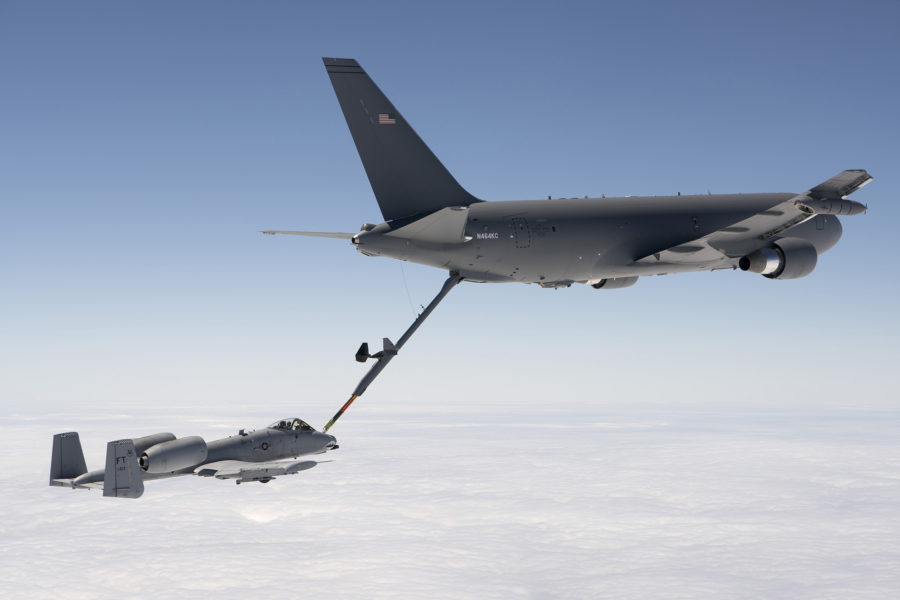Only five U.S. aircraft have yet to be operationally certified to refuel from the KC-46, but the Pegasus can still tank up those aircraft in an emergency, according to Air Mobility Command. The last certifications will be driven by test events and not a calendar schedule, AMC said.
While AMC announced June 2 that some 97 percent of U.S. Transportation Command air refueling taskings can be met by the KC-46, the tanker is not yet certified for the A-10 attack jet; B-2 bomber; CV-22 tiltorotor special operations turboprop; E-4 flying command post, and MC-130H special operations tanker.
“We’re continuing to work through operational certifications” on the last five airplanes, “but they face no technical hurdles,” an AMC spokeswoman said. The only jet that doesn’t apply to is the A-10, which is restricted because of the KC-46’s “stiff boom” deficiency, she noted. The issue affects lightweight aircraft such as the A-10 being unable to deliver sufficient power to compress the boom enough to maintain refueling position.
The latest Interim Capability Release “is not tied to what the KC-46A can or cannot refuel,” the spokeswoman noted. “It is tied to what it can be tasked to refuel by USTRANSCOM. The fleet is now available to be tasked, on a daily basis, to any receiver/mission set released under
this and previous ICRs.”
The ICR is a “conditions-based approach to increase tanker capacity, bringing daily ‘taskable’ capabilities, at scale with predicted reliability, for Joint Force employment,” she added.
It’s not known whether all the remaining aircraft will be certified in the next ICR certifying aircraft for operational taskings from US TRANSCOM, as those clearances depend on testing which is event-driven, not calendar-driven, the spokeswoman said.
There have been six ICRs since July 2021 certifying types of aircraft for operational refueling; the first of which cleared aircraft using the centerline drogue-type refueling system. Subsequent batches cleared aircraft using the KC-46’s boom system.
Testing continues to certify allied aircraft with the KC-46, most of which use the centerline drogue-type refueling system.

The Air Force is conducting refueling testing with the remaining five aircraft behind the KC-46, which could pass fuel to them in a national emergency.
Even when all aircraft have received clearance to refuel with the KC-46, the type will still not be declared technically “operational” because of continuing deficiencies with the existing Remote Viewing System used by the boom operator. A fix for the RVS has been developed and the cost of it will be shared between the Air Force and KC-46 builder Boeing, because it expands on the capabilities the Air Force originally wanted from the system and thus goes beyond the fixed-price nature of the KC-46 contract. The RVS is expected to be resolved with a “2.0” system in the next 18-24 months.
The problems with the vision system have to do with lighting and depth perception by the boom operator, whose station is just behind the cockpit of the KC-46. On the KC-135 and KC-10, the boom operator, located in the tail of the aircraft, had a direct view of the refueling aircraft. However, the RVS adds capabilities for blackout refueling and greater visibility to the sides of the jet, where aircraft waiting to refuel typically maintain station with the tanker.


